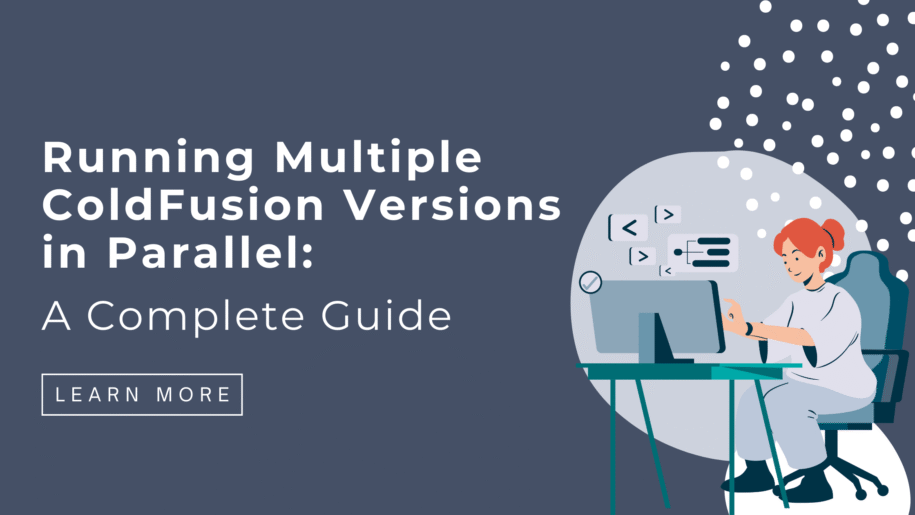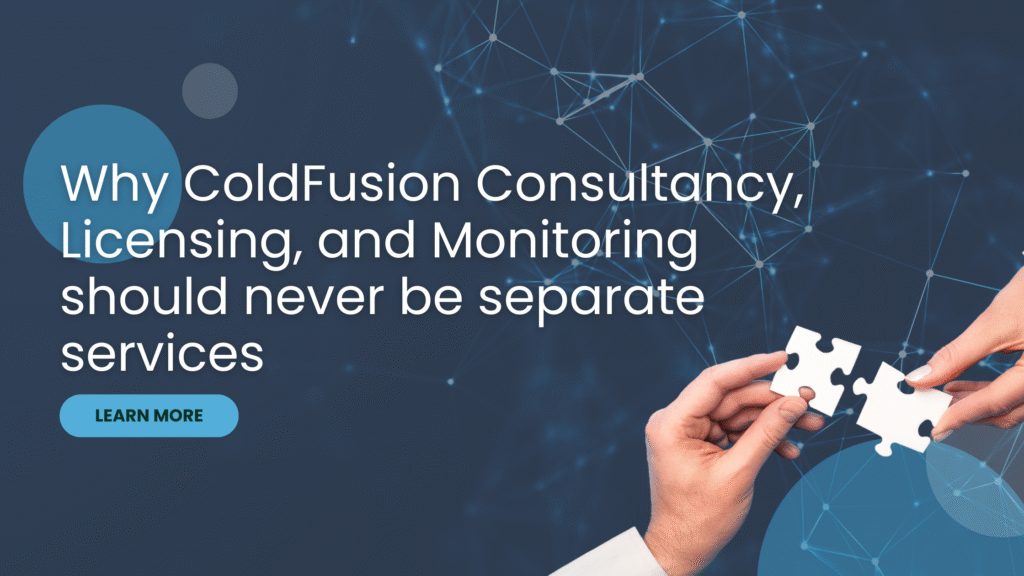When it’s time to upgrade your ColdFusion installation, you might want to run the new version alongside your existing setup for testing, gradual migration, or maintaining legacy applications. This approach allows you to test your applications thoroughly before fully committing to the upgrade.
The Challenge: Understanding Web Server Connectors
One of the most common questions system administrators face when setting up parallel ColdFusion installations is: “Do I need to remove my old web server connector?” The answer depends entirely on how your current installation is configured.
Java Version Requirements: A Critical Consideration
Before diving into connector configuration, it’s essential to understand that different ColdFusion versions require specific Java versions:
- ColdFusion 2025: Requires Java 21 (only)
- ColdFusion 2023: Requires Java 17 (only)
- ColdFusion 2021: Requires Java 11 (only)
- ColdFusion 2018: Requires Java 11
This means you cannot share JDK installations between CF2025 and CF2021, despite what you might assume. Each version needs its own compatible Java runtime.
Understanding Your Current Connector Configuration
The first step in setting up parallel installations is understanding how your current web server connectors are configured. Open the wsconfig (Web Server Configuration) tool for your existing ColdFusion version to see the current setup.
You’ll typically find one of these configurations:
1. “All Sites” Configuration
This is the simplest setup where one connector handles all websites, directing them to a single ColdFusion version. Most administrators choose this approach initially.
2. Individual Site Configuration
Some sites are configured individually, giving you granular control over which CF version each site uses.
3. “All Individually” Configuration
Each site has its own connector configuration, providing maximum flexibility.
Migration Strategies Based on Your Current Setup
Scenario 1: Migrating from “All Sites” Configuration
If your current setup uses the “all sites” approach:
- Remove the existing connector using the wsconfig tool from your old CF version
- Add back specific sites to the old CF version using the same wsconfig tool
- Configure remaining sites to use the new CF version through its wsconfig tool
This approach ensures you can gradually migrate sites while keeping others running on the proven version.
Scenario 2: Working with Individual Site Configurations
If you already have individual site configurations:
- Identify sites to migrate by reviewing your current wsconfig settings
- Remove connectors for sites you want to move to the new CF version
- Add those sites to the new CF version using its wsconfig tool
Scenario 3: Complete Migration
For a full migration where no sites remain on the old version:
- Remove all connectors from the old CF version using its wsconfig tool
- Add all sites to the new CF version
- Optionally switch to “all sites” configuration for simplicity (though this reduces future flexibility)
Best Practices for Parallel Installations
Plan for Future Upgrades
While configuring all sites to use one connector is simpler, maintaining individual site configurations provides more flexibility for future upgrades. Consider your long-term upgrade strategy when making this decision.
Test Thoroughly
Use your parallel setup to:
- Test critical applications with the new CF version
- Verify performance under realistic loads
- Validate integrations and third-party components
- Ensure all features work as expected
Monitor Both Installations
Keep both versions running smoothly during the transition period:
- Monitor resource usage on both CF instances
- Watch for conflicts in port usage or file access
- Ensure adequate system resources for both versions
Troubleshooting Common Issues
Connector Configuration Problems
Sometimes the wsconfig tool becomes “confused” about existing configurations, especially if manual modifications were made. If you encounter issues:
- Verify no manual changes were made to connector files
- Check for conflicting port assignments
- Ensure proper permissions on CF directories
- Consider seeking expert help if sites go down unexpectedly
Resource Conflicts
Running multiple CF versions requires careful resource management:
- Monitor memory usage carefully
- Ensure adequate disk space for both installations
- Watch for port conflicts between versions
- Consider load balancing if needed
When to Seek Expert Help
While the process is generally straightforward, configuration issues can be complex and may result in website downtime. Consider consulting with a ColdFusion expert if:
- Your current setup was customized or modified manually
- You encounter unexpected errors during connector reconfiguration
- Sites become unavailable during the migration process
- You’re working with mission-critical applications that can’t afford downtime
Conclusion – Running Multiple ColdFusion Versions in Parallel
Running multiple ColdFusion versions in parallel is not only possible but recommended for safe, gradual upgrades. The key is understanding your current connector configuration and planning the migration methodically. Remember that each CF version has specific Java requirements, so plan your infrastructure accordingly.
By taking a systematic approach to connector management and thoroughly testing your applications on the new version, you can ensure a smooth transition while maintaining the stability of your production environment.











